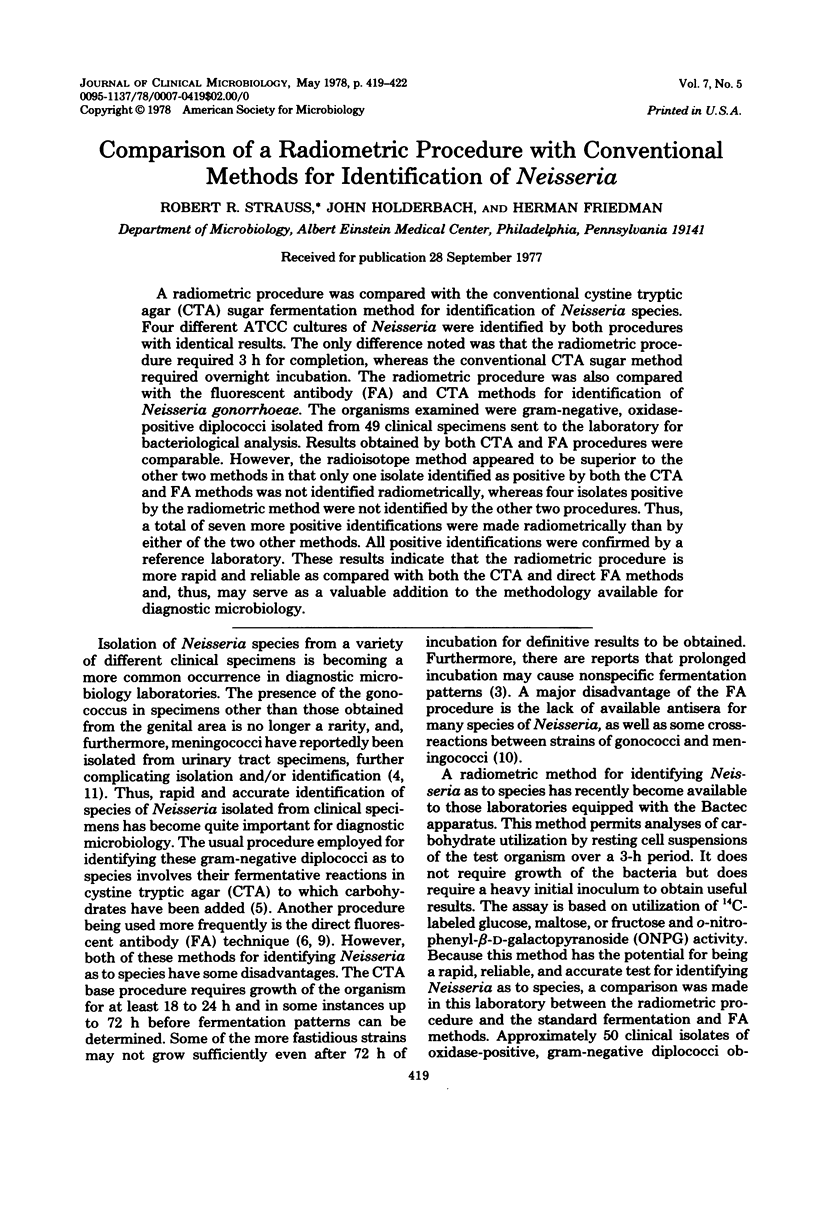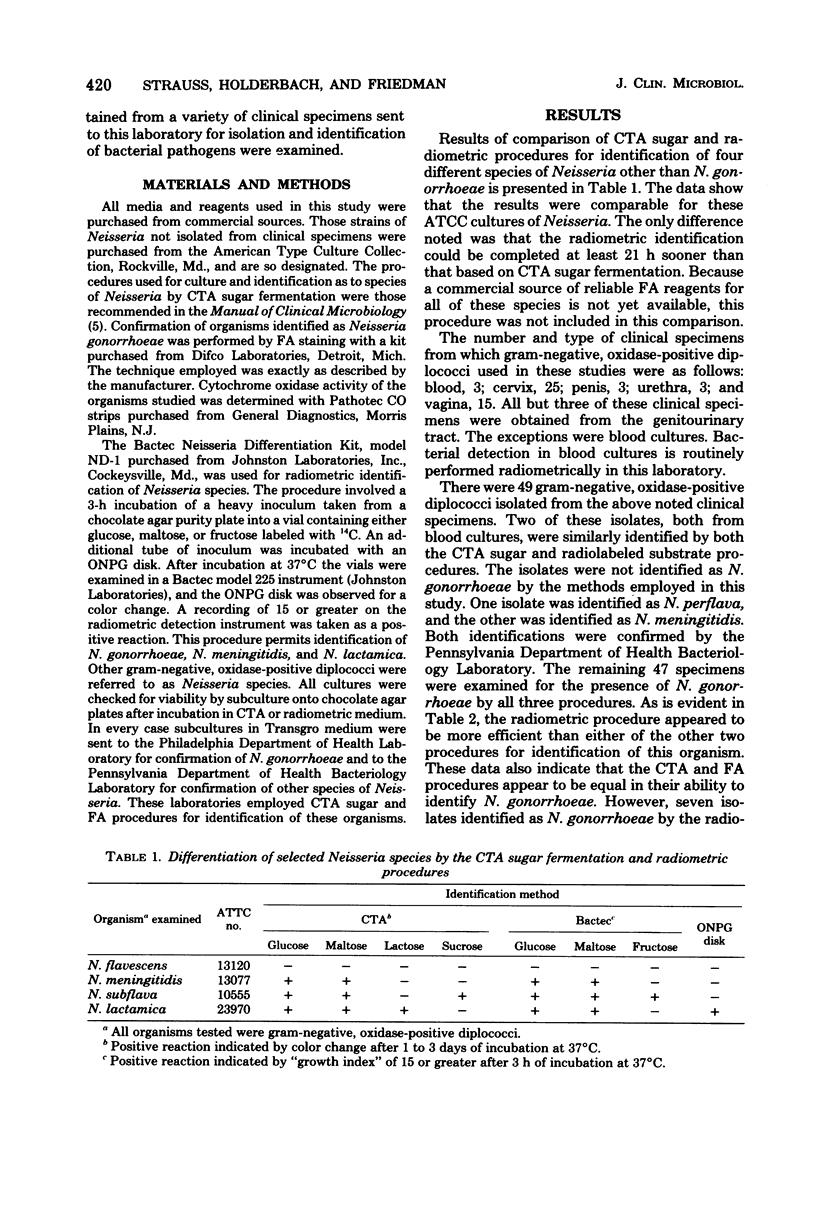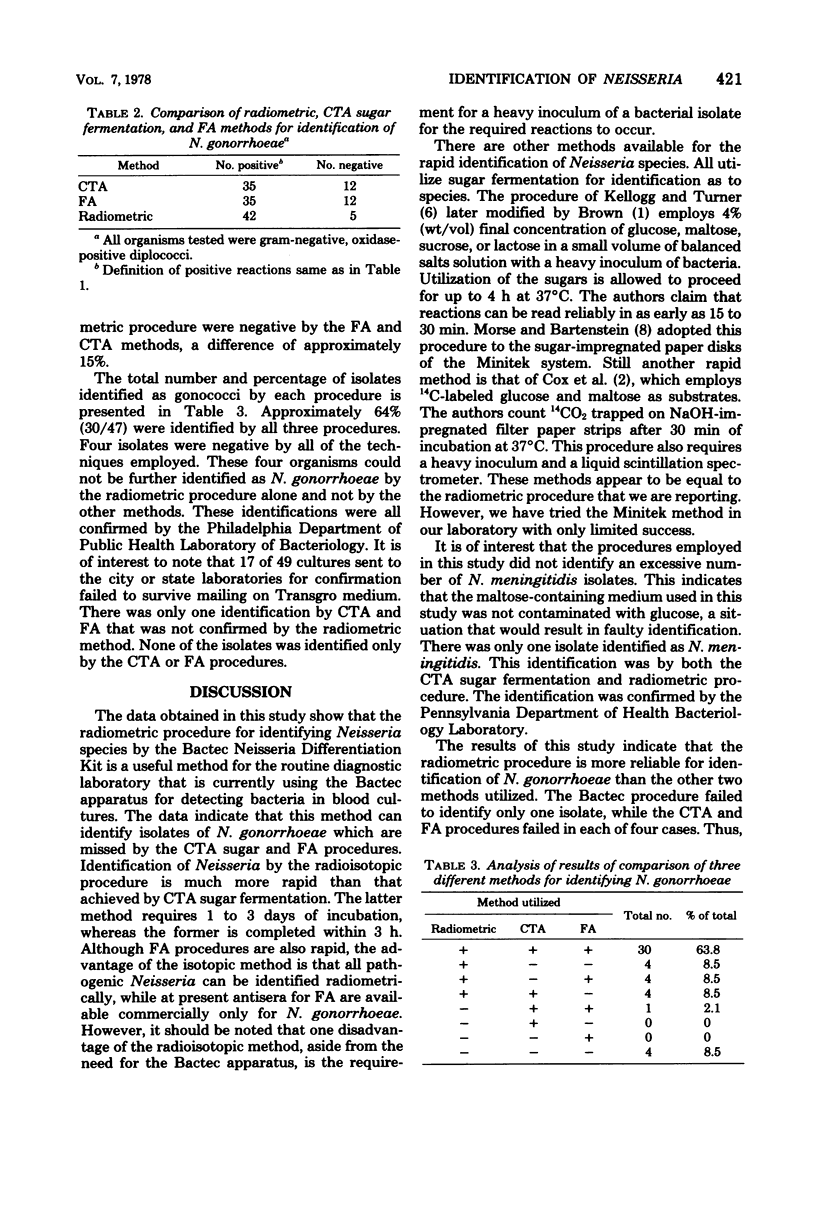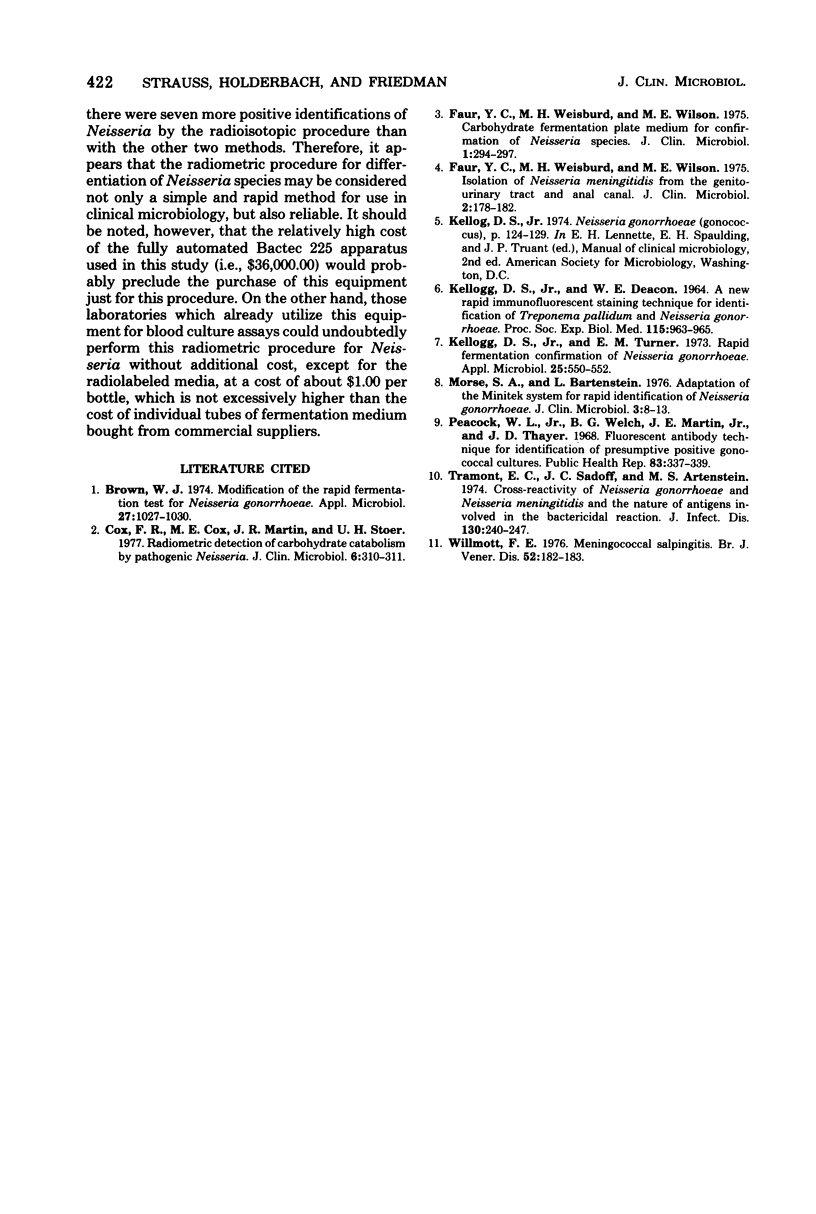Abstract
A radiometric procedure was compared with the conventional cystine tryptic agar (CTA) sugar fermentation method for identification of Neisseria species. Four different ATCC cultures of Neisseria were identified by both procedures with identical results. The only difference noted was that the radiometric procedure required 3 h for completion, whereas the conventional CTA sugar method required overnight incubation. The radiometric procedure was also compared with the fluorescent antibody (FA) and CTA methods for identification of Neisseria gonorrhoeae. The organisms examined were gram-negative, oxidase-positive diplococci isolated from 49 clinical specimens sent to the laboratory for bacteriological analysis. Results obtained by both CTA and FA procedures were comparable. However, the radioisotope method appeared to be superior to the other two methods in that only one isolate identified as positive by both the CTA and FA methods was not identified radiometrically, whereas four isolates positive by the radiometric method were not identified by the other two procedures. Thus, a total of seven more positive identifications were made radiometrically than by either of the two other methods. All positive identifications were confirmed by a reference laboratory. These results indicate that the radiometric procedure is more rapid and reliable as compared with both the CTA and direct FA methods and, thus, may serve as a valuable addition to the methodology available for diagnostic microbiology.
Full text
PDF



Selected References
These references are in PubMed. This may not be the complete list of references from this article.
- Brown W. J. Modification of the rapid fermentation test for Neisseria gonorrhoeae. Appl Microbiol. 1974 Jun;27(6):1027–1030. doi: 10.1128/am.27.6.1027-1030.1974. [DOI] [PMC free article] [PubMed] [Google Scholar]
- Cox F. R., Cox M. E., Martin J. R., Stoer U. H. Radiometric detection of carbohydrate catabolism by pathogenic Neisseria. J Clin Microbiol. 1977 Sep;6(3):310–311. doi: 10.1128/jcm.6.3.310-311.1977. [DOI] [PMC free article] [PubMed] [Google Scholar]
- Faur Y. C., Weisburd M. H., Wilson M. E. Carbohydrate fermentation plate medium for confirmation of Neisseria species. J Clin Microbiol. 1975 Mar;1(3):294–297. doi: 10.1128/jcm.1.3.294-297.1975. [DOI] [PMC free article] [PubMed] [Google Scholar]
- Faur Y. C., Weisburd M. H., Wilson M. E. Isolation of Neisseria meningitidis from the Genito-urinary tract and anal canal. J Clin Microbiol. 1975 Sep;2(3):178–182. doi: 10.1128/jcm.2.3.178-182.1975. [DOI] [PMC free article] [PubMed] [Google Scholar]
- KELLOGG D. S., Jr, DEACON W. E. A NEW RAPID IMMUNOFLUORESCENT STAINING TECHNIQUE FOR IDENTIFICATION OF TREPONEMA PALLIDUM AND NEISSERIA GONORRHOEAE. Proc Soc Exp Biol Med. 1964 Apr;115:963–965. doi: 10.3181/00379727-115-29090. [DOI] [PubMed] [Google Scholar]
- Kellogg D. S., Jr, Turner E. M. Rapid fermentation confirmation of Neisseria gonorrhoeae. Appl Microbiol. 1973 Apr;25(4):550–552. doi: 10.1128/am.25.4.550-552.1973. [DOI] [PMC free article] [PubMed] [Google Scholar]
- Morse S. A., Bartenstein L. Adaptation of the Minitek system for the rapid identification of Neisseria gonorrhoeae. J Clin Microbiol. 1976 Jan;3(1):8–13. doi: 10.1128/jcm.3.1.8-13.1976. [DOI] [PMC free article] [PubMed] [Google Scholar]
- Peacock W. L., Jr, Welch B. G., Martin J. E., Jr, Thayer J. D. Fluroescent antibody technique for identification of presumptively positive gonococcal cultures. Public Health Rep. 1968 Apr;83(4):337–339. [PMC free article] [PubMed] [Google Scholar]
- Tramont E. C., Sadoff J. C., Artenstein M. S. Cross-reactivity of Neisseria gonorrhoeae and Neisseria meningitidis and the nature of antigens involved in the bactericidal reaction. J Infect Dis. 1974 Sep;130(3):240–247. doi: 10.1093/infdis/130.3.240. [DOI] [PubMed] [Google Scholar]
- Willmott F. E. Meningococcal salpingitis. Br J Vener Dis. 1976 Jun;52(3):182–183. doi: 10.1136/sti.52.3.182. [DOI] [PMC free article] [PubMed] [Google Scholar]


